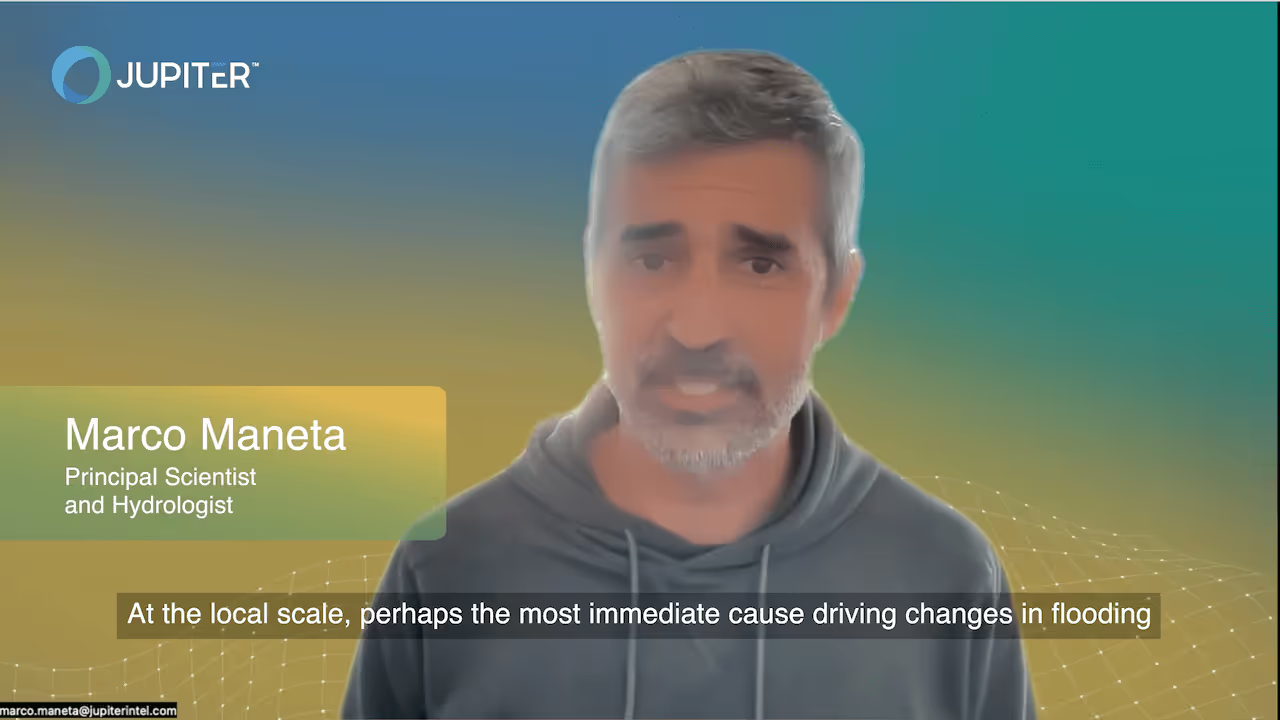Transcript
At the local scale, perhaps the most immediate cause driving changes in flooding is land use change: processes like deforestation, urbanization, and poor land management practices can all create more extensive flooding during storms because these modifications of land cover reduce the ability of the soil to absorb and hold excess water.
At the global scale, the main driver of change in flooding is climate change and the heating of the atmosphere due to the release of greenhouse gases. There are various reasons a warmer atmosphere generates more floods. One reason is that a warmer atmosphere can bring a faster onset of spring conditions that accelerate snowmelt and increase flooding during the spring and early summer in mountain regions, like the western US.
Another critical reason is that the ability of the atmosphere to absorb and hold water vapor increases exponentially with each degree of warming. More water vapor in the atmosphere means longer, heavier storms that can produce more inland flooding. This is why we are observing more floods in the Northeast and Midwest regions of the US. More vapor in the atmosphere also increases coastal flooding. This is because more frequent and intense offshore storms drive more frequent and extensive storm surges as we observe on the Gulf Coast.
These are some of the main drivers of change in flooding.
Thanks for listening and do not hesitate to ask more questions!
.webp)

